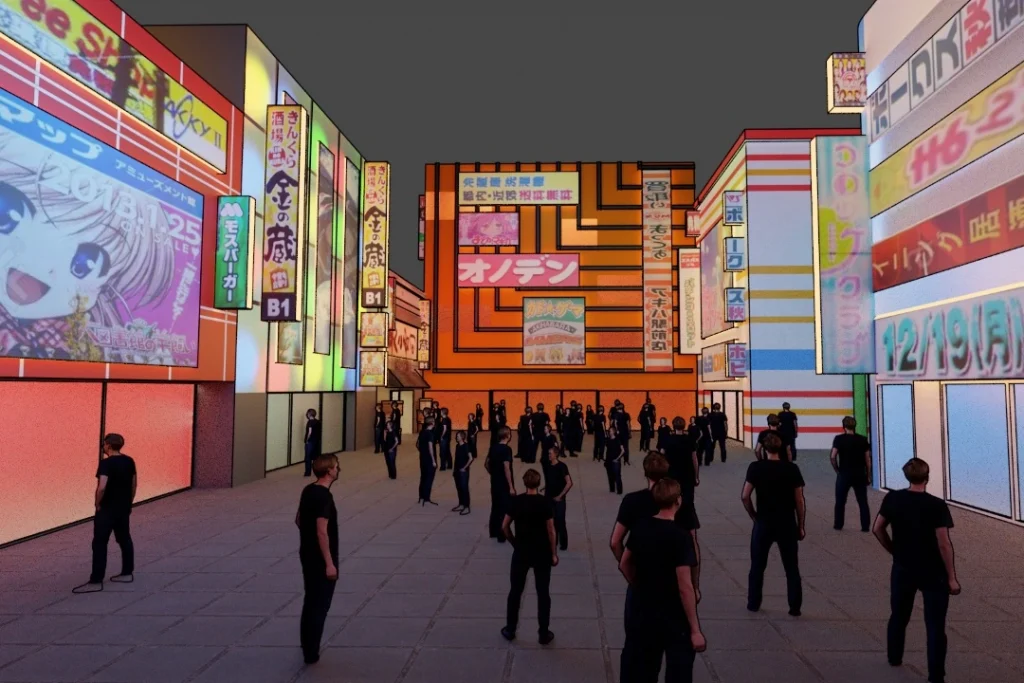The idea of spending thousands or even millions of dollars to buy fictitious “land” in a virtual world may sound absurd. But in recent months, we have seen significant investments in virtual land within the metaverse. PwC is among the latest to dive in, having purchased real estate in The Sandbox, a virtual gaming world (where adidas has similarly acquired land), for an undisclosed but likely handsome sum. If other reported sales are anything to go by, PwC likely paid a handsome sum. One person recently bought a plot of land in the Snoopverse, a virtual world rapper Snoop Dogg is developing within The Sandbox, for $450,000. Meanwhile, Tokens.com’s Metaverse Group bought a plot of land on virtual platform Decentraland in November for $2.43 million.
These deals come amid the rise of the “metaverse,” a term that has been used a lot as of late, including when Facebook re-branded to Meta in October 2021. The metaverse describes a vision of a connected 3D virtual world, where “real” and digital worlds are integrated using technologies such as virtual reality (VR) and augmented reality (AR). This immersive environment will be accessible through the likes of VR headsets, AR glasses, and smartphone apps, and users will meet and communicate as digital avatars, explore new areas, and create content. The idea is the metaverse will develop to become a collaborative virtual space where we can socialize, play, work, and learn.
There are several, individual metaverses already – for example on virtual gaming platforms like The Sandbox and virtual worlds like Decentraland. In the same way a website is part of the broader 2D world wide web, individual metaverses are expected to one day form a larger, connected metaverse. And just as in the real world, it is – and increasingly will be – possible to buy things in the metaverse, including real estate.
Virtual land as an NFT
Looking beyond platform specific currencies like Robux, transactions in the virtual world are generally monetized using cryptocurrencies. Other than cryptocurrencies, digital assets like non-fungible tokens (“NFTs”) are a method for exchanging value within the metaverse. Although NFTs are primarily tied to items like digital art, a variety of assets may be linked to an NFT (and the underlying code, which records ownership), including virtual real estate. On platforms like OpenSea, where people go to buy and trade NFTs, there are now plots of land, and even virtual houses.
To ensure that digital real estate has value, supply is limited – a concept in economics called “scarcity value.” For example, Decentraland is made up of 90,000 pieces or “parcels” of land, each around 50 feet by 50 feet.
And we are already seeing examples where the value of virtual real estate is going up. In June 2021, a digital real estate investment fund called Republic Realm spent 1,295,000 MANA (worth $913,228 at the time of sale) to buy an NFT representing a plot on Decentraland. According to DappRadar, a website which tracks NFT sales data, it was the most expensive purchase of NFT land in Decentraland history. Fast forward to November 2021, and the Metaverse Group bought its plot in Decentraland for 618,000 MANA (the equivalent of $2,428,740 at the time). Turns out, the plot of land that the Metaverse Group acquired was actually smaller than the former – 116 land parcels compared to 259 bought by Republic Realm.
It is not just Decentraland that is seeing land value appreciation. In February 2021, Axie Infinity (another virtual gaming world) reportedly sold nine of its land parcels together for 888.25 ETH (the equivalent of $1.5 million at the time), or roughly 98.7 ETH per plot – a record, the company said – before one single land parcel sold for 550 ETH (worth $2.3 million at the time of the sale) in November 2021. While it appears that values are climbing, it is important to acknowledge that real estate investment in the metaverse remains extremely speculative; no one can be certain if this boom is the next great thing or the next big bubble.
The future of metaverse real estate
Financial incentives aside, you may be wondering what companies and individuals will actually do with their virtual land. As an example, the Metaverse Group’s purchase is in Decentraland’s fashion precinct. At the time of the sale, the Metaverse Group said the space would be used to host digital fashion events and sell virtual clothing for avatars – another potential area for growth in the metaverse. The company has since revealed it will stage the impending Metaverse Fashion Week on that very plot of virtual real estate.
While investors and companies are dominating this space at the moment, not all metaverse real estate is expected to cost millions. But what could owning virtual land offer you? If you buy a physical property in the real world, the result is tangible – somewhere to live, to take pride in, to welcome family and friends. Virtual property does not provide physical shelter, but there are still some parallels. In shopping for virtual real estate, you could buy a piece of land to build on – or you could choose an already-built virtual house that you like. You could make it your own with various digital objects, and invite visitors, and visit others’ virtual homes, too.
This vision is likely a while away, but if it seems completely absurd, we should remember that once upon a time, people had doubts about the potential significance of the internet, and then social media. Technologists predict the metaverse will mature into a fully functioning economy in the coming years, providing a synchronous digital experience as interwoven into our lives as email and social networking are now.
Theo Tzanidis is a Senior Lecturer in Digital Marketing at the University of the West of Scotland. (This article was initially published by The Conversation.)











